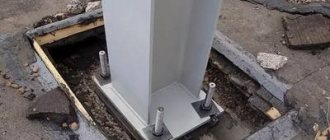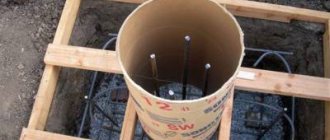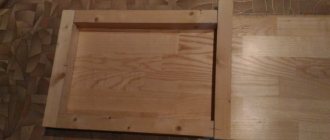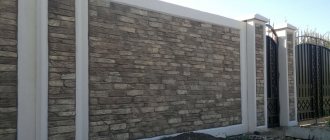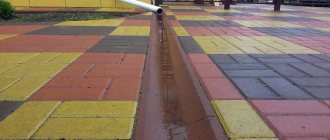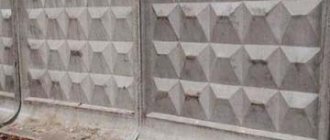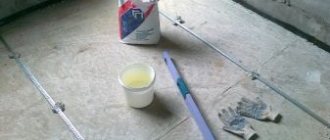When friends, family, and loved ones leave, it’s bittersweet. In memory of them, it is customary to erect monuments in the cemetery, which can be made of natural stone (granite, marble), metal, or granite chips. The materials intended for the manufacture of tombstones are quite heavy, so it is necessary to build a reliable foundation for the monument. You can contact a specialized company, but with minimal construction skills, it’s easy to do the work of installing the monument yourself.
Making a foundation for a monument in a cemetery
Remembering relatives and friends who have passed away, memorial plaques, obelisks, and pedestals are installed on their graves.
Tombstones are made of marble, granite, small stone chips and metal. The burial sites are looked after, maintained in order and ennobled.
Basically, they turn to specialized funeral service companies, where they order the installation of monuments in combination with foundation work. You can make the foundation for a monument in a cemetery yourself, without contacting construction organizations.
We arrange a flower garden for the monument
Prepare the soil. To create a flowering flowerbed, it must be fertilized: you should purchase mineral or organic supplements. Fungicides and other means are used to protect plants from mold, diseases, bedbugs, and insect pests. When the stele is installed, they proceed to filling the flowerbed with soil. After this, you can plant flowers. Suitable:
- irises;
- marigold;
- pansies;
- hosts.
Flower garden at the grave
Required tools and materials
At the site of installation of the monument, the soil is first examined. Neighboring burial sites will be a good guide. On stable ground, the monuments look level and do not warp anywhere. You can make a foundation even for heavy slabs and tombstones.
On clay soil, strip foundations are laid under massive ritual complexes. In sandy soils, without going deep, a strip base is made.
Preference is given to the construction of monuments of small and medium size. The main focus of the project is on the center of gravity. In the most difficult place, the foundation is thoroughly strengthened. Particular strength keeps the structure in good condition for many years.
Mix the solution in a bucket or special container. If dismantling is carried out, you will need a crowbar.
Standard set of material:
A base made of durable metal is used at the place of optimal load.
Site preparation
The construction of a foundation for a monument begins with clearing and preparing the site. If an old monument is erected, dismantling is done and the location of the foundation and beams is determined. After clearing, marking is carried out. Using a crowbar, the edges of the burial are determined.
The length of the beams is calculated. A trench is dug under the ends of the beams and the frame is immersed. Reinforced concrete beams are laid to accommodate the cabinet and flower bed. Using a level will save a lot of time.
It is important at all stages to check the dimensions as often as possible.
Installation of formwork
Formwork is installed on the frame. The formwork is mounted from wooden material or metal panels. Temporary spacers are made under the tree, and the inside is covered with roofing felt insulation.
Ready-made formwork panels have great strength. The panels are connected with bolts. The design is easy to use. The formwork can be quickly removed from the foundation. After metal formwork, a smooth and level area remains.
For professional builders, metal panels become an indispensable assistant. If you build the foundation yourself, wooden formwork will cost less. The material is selected to be reliable to maintain concrete pressure.
Step-by-step instructions for creating a foundation for a grave
The graves in the graveyards are looked after by relatives, maintained in order, and beautified. The installation of a monument at a burial is a tribute to Christian ritual traditions, an expression of respect for the deceased. Pouring the foundation is an important stage in making a tombstone.
Tombstones for cemeteries are made from:
Materials and tools
The headstones on the foundation consist of:
The foundation for a monument in a cemetery is poured with your own hands after the ground is leveled and checked for subsidence. Select a strip-type concrete base. They install a flower bed and a pedestal. When the materials harden, the product is mounted.
Available materials will be required to make the foundation and carry out manipulations to install the monument. You can buy them at a hardware store, use existing ones:
A stele is not always placed on a grave; many people prefer a cross. It's inexpensive and practical. Crosses can be made from different materials: wood, metal, stone. The crucifix, carved from oak or hornbeam, is short-lived and has a low price. The monument quickly succumbs to corrosion due to moisture, begins to rot, and deteriorates.
2-3 weeks after installing the foundation, you can begin to improve the flower garden. An earthen mixture or expanded clay is taken and poured into the designated area.
Perennial plants that are resistant to weather changes are selected and planted for the monument: irises, petunias, pansies, crocuses.
You can use lawn grass to decorate the grave. They cover the flower garden with it and combine it with other plants.
Site preparation
The work of constructing the foundation begins with clearing the installation site. If there is an old monument on the grave, it is dismantled. Perform markings and take into account the size of the beams. A trench is dug under their ends into which the frame is immersed. There should be space left for a pedestal or flower bed. Use a level for installation.
Before starting work on the site, make sure that the installation of the memorial is agreed upon with the cemetery administration:
Formwork
Formwork in a cemetery can be made of metal. It is installed on the frame. If part of the foundation is made of wood, temporary spacers are made. It is more convenient to use the iron attribute: it has strength. If necessary, it can be removed, leaving a smooth place for the monument.
Metal formwork panels are fastened with bolts. The downside is the high price; wooden products are cheaper. The material must be of good quality to hold the pressure of the concrete.
Pouring the foundation
Before pouring, reinforcement is carried out to enhance the strength of the base. The frame of the monument is knitted from wire, thin rods, and fastened by welding. To install the pedestal, cement is mixed with water and poured into the lower opening of the pipe. The reinforcement rod is treated with this composition.
Foundation reinforcement
Reinforcement increases the strength of the monument's base. Auxiliary fasteners reliably maintain the stability of the ritual complex. The frame is knitted from special wire or welded.
To install the stand, cement and water are diluted to a pasty state. Laitance of cement is fed into the lower opening of the pipe. The reinforcement pin is coated with the same solution. The pin is dipped in dry cement and inserted into the prepared hole at the bottom of the cabinet.
The beams are immersed in a trench filled with mortar. The beams must be recessed into the concrete itself. Excess mortar must be removed and wait until the structure “sets.” Next, a pillow is formed, and a stand is installed on it with a pin into the ground.
A large rubber mallet is used to compact the material evenly, and at the same time the stand is leveled.
Important! There must be connecting holes between the stand and the monument. Cement mortar is first poured into them and metal reinforcement is inserted.
How to assemble and install a tombstone
Before installing a monument with your own hands, decide on the position and size of the flower bed. Make some basic markup.
To install a monument, you should start with a stand for the obelisk. It is placed on concrete or special glue. If there is a slight slope, level the cabinet with a rubber hammer. Hit carefully so as not to damage the lining.
The remaining edges of the flower bed also need to be placed on cement mortar or glue. Carefully check the corners for play and squareness.
Drill holes about 20mm in diameter in the stand and tombstone. Insert iron rods into the recesses of the cabinet so that most of their length protrudes (about 15-20 cm). Fill the holes with a liquid mixture of cement and sand, special sealant or glue.
Before the stele is installed, place wooden dies on the base. They will protect the marble or granite surface from chips and scratches that may occur during the final installation process.
To correctly and accurately install a tombstone, carefully place the stele on the pins. Rock it to the sides, removing the boards one by one, until it is firmly in place.
Double-check the correctness, evenness and symmetry of the installed structure. Wait for the binding solutions to dry completely. Only after this, clean off the remaining mixture and cover the seams with sealant or grout. If you rush, particles of wet concrete can scratch the smooth surface of the stone.
Pouring concrete
For installation of the cabinet, a sand-cement mortar of high rigidity is made. Humidity should be low. Sand should not be allowed to spill. A weak solution is not suitable for such work.
Cement laitance is applied completely over the entire area of the reinforcement. Concrete is poured into the trench so that the beam is supported and located in the concrete. The structure is sprinkled with dry soil on top. The distance between the gaps is two mm or less.
After pouring, the joints are grouted. Cement is mixed with water until it reaches the consistency of sour cream. First, the long part of the flower bed is carefully removed and a concrete solution is laid. The middle remains empty to drain water during rain.
A slight downward deviation is allowed so that rainwater does not collect near the monument. The seams are sprinkled with cement and deep cleaning is done. The remaining parts are also installed. The solution quickly sets and hardens.
Monument care
Concrete monuments require no maintenance. From time to time, dust is removed from them with a dry sponge and even washed, but such a stove does not need polishing or regular cleaning. If it has been standing on the grave for more than 5 years, the plates with photos and inscriptions may need to be replaced.
Concrete monuments are cheap and beautiful. They are easy to make if you have the knowledge and equipment. The material can also be used for formwork, foundations, and sculpture. Neither gravestones nor sculptures require special care.
Cladding works
There are many ways to cladding monuments: from modern to classic options. Granite tile cladding is strong, durable, looks beautiful, but is more expensive than paving slabs.
Dirt and dust are first removed from the concrete base. Fat is removed from the surface with special glue. Markings are made on the foundation. With a special circle, notches are applied where the glue will be poured. The tiles are laid according to the markings and pressed tightly. Within 24 hours the glue sets to the surface. Excess glue from the surface is removed with a solvent.
Recommends watching the video:
Instead of concrete slabs, you can put a special slab made of heavy-duty reinforced concrete on the grave. A minimum of time is spent on installation - maximum aesthetics and reliability. Conventional cladding is an old proven installation method without glue, without cement, without a monolith. All work is carried out using a hammer and loose clinching.
Source
How to make a base for a monument correctly
Installing a monument at a grave site is a special type of installation work, characterized by a high level of complexity. The tombstone is installed on a solid foundation, which is poured using a special technology, and it is important to correctly install the monument.
The headstone must be on a strong and secure foundation, otherwise it may tilt or fall into the ground. If a heavy, large memorial made of granite or marble is being installed, a concrete base must be poured. When the foundation is poured incorrectly, there is a risk that after a while the monument will have to be completely replaced.
Monolith
Monolithic foundations are poured very rarely. As a rule, there must be 2 conditions for this:
- A very massive, heavy memorial complex;
- Loose, soft soil, unable to support much weight.
A pit is dug under it, the depth of which is calculated individually. An iron frame is installed in the resulting pit, which is filled with a special mixture. The reinforced concrete mass is left for several days until it hardens completely.
The memorial parts are placed on the resulting platform and fixed with cement or a special adhesive.
Foundation pouring technology
It is necessary to install the foundation for the monument in warm and not rainy weather, having coordinated the installation work in advance with the cemetery administration. You can pour the concrete base yourself, but it is better to immediately contact experienced installers.
In any case, when installing, it is important to know how to properly build a foundation so that it is strong and reliable.
Phased construction of a concrete foundation:
The remaining work is carried out after the concrete has completely hardened.
The working process
Monuments are affected by many unfavorable factors. To extend the service life of the slab, to make it durable and of high quality, it is imperative to adhere to the technological process during manufacturing.
Return to contents
Preparing the solution
When preparing the solution, it is important to maintain the correct proportions. As a rule, the proportions are 70-72 kg. So, you will need:
- Cement. Brand 500, 22-24 kg.
- Granite screening of fraction 0-5 mm, 50-52 kg.
- River sand, 10 kg.
- Plasticizer, approximately 250 g.
- Water. Remember: the more it is, the longer the monument will dry, and pulling it out will be difficult. Drying will take up to 3 days or more. If you add too little water, holes may appear on the surface of the monument.
First of all, sand and cement are mixed. Next, you should dilute the plasticizer and dye in water (the consistency should resemble thick sour cream).
Return to contents
We give the appearance of a slab
The process, which will be discussed below, is divided into several important stages:
Leveling the concrete layer.
Processing the container. This is necessary so that the solution does not stick to it. This will allow you to achieve a perfectly smooth surface of the monument. Treat the container with a special compound or silicone grease (you can buy it at a car store). Use according to instructions.- Applying the first layer. Its thickness should not exceed two centimeters. Compact the solution especially carefully, making sure that it fills all parts of the container. The work is painstaking, because it determines exactly how the finished slab will look.
- Reinforcement. We lay several reinforcement rods on the first layer. Do not forget that the lower ends must protrude for further fastening.
- Formation of the outer layer. Once you have compacted the concrete, add a few more reinforcing bars. After this, start laying the outer layer. It must be carefully leveled with a trowel. After drying, the last layer most often needs to be sanded, so the more thoroughly you level the solution, the less work will be left for later.
- Solidification of the solution. The container with cement is left in a dry room, the temperature in which should be approximately 20 degrees (not higher). After a couple of days, the stove is removed and left for another 4 weeks. Do not forget to moisten its surface - this will help the monument gain strength.
Return to contents
Improvement of the grave
Basically, the construction of the foundation is carried out in conjunction with landscaping work, such as cladding with slabs and installation of a tombstone.
Before covering, the surface must be moistened with water. Then the tiles and horizontal elements are glued onto a special solution. The glue dries in 24 hours. At the end, a pedestal and monument are mounted. The monument is attached to the stand using a steel pin and special glue.
offers a comprehensive solution for landscaping a burial site. First, specialists go to the work site to take measurements of the grave and determine the type of soil. Only after this the desired method of constructing a concrete foundation is selected.
Our company has been manufacturing monuments from granite and marble for more than 10 years. We provide a full range of services for the installation of monuments and the improvement of grave sites.
You can get a free consultation at any time by phone: 8-4012-42-32-86.
Source
Equipment for the production of concrete products
To make a concrete slab yourself you need:
- templates for the monument (10-20 thousand rubles);
- mold for the production of ceramic tablets;
- concrete mixer (15-16 thousand rubles);
- vibration table (50 thousand rubles);
- vibrating sieve
Vibrating table
It is impossible to make a high-quality concrete slab without these devices. A person does not have the required amount of physical strength for this. A monument made entirely by hand will not last long.
DIY foundation for a monument in a cemetery
When friends, family, and loved ones leave, it’s bittersweet. In memory of them, it is customary to erect monuments in the cemetery, which can be made of natural stone (granite, marble), metal, or granite chips. The materials intended for the manufacture of tombstones are quite heavy, so it is necessary to build a reliable foundation for the monument. You can contact a specialized company, but with minimal construction skills, it’s easy to do the work of installing the monument yourself.
Decoration with artificial flowers
Very few artificial flowers are placed on the grave. One beautiful bouquet or wreath is enough. The shade of the buds depends on the gender and age of the deceased.
The graves of children and young people are covered with white lilies or chrysanthemums. It is customary to decorate women's graves with red roses; men's graves do not need additional decorations.
Artificial bouquets fade in the sun and need to be changed frequently.
To simplify the care of the grave, it is customary to replace the Orthodox cross with a monument, cover the grave mound with granite or marble slabs, fill the area around them with crushed stone or marble chips, and plant flower beds.
A fence is installed around the grave, and a bench and table are placed inside. Even if relatives do not come to the cemetery for several years in a row, the appearance of the burial will not change.
Installation of a monument in a cemetery: preliminary work
Before starting work on the construction of a monument in a cemetery, a special permit for the construction of a monument must be obtained.
It should be noted that installation of the monument can only begin in warm weather, no earlier than one year after the burial. During this period, the soil will be thoroughly compacted, reducing the risk of soil subsidence during work.
The next stage of work will be to study the soil in the cemetery (usually clay soils predominate in burial places, but sometimes others are found).
A complete description of the soil will help you choose the most optimal foundation that can support the weight of a heavy tombstone. When installing heavy structures on clay soils, it is best to choose a deep strip foundation; small monuments can be installed on a columnar base with a metal box.
If sandy soils predominate in the cemetery, it is enough to erect a strip foundation with a shallow recess for the monument. Such a base will support the weight of tombstones of any weight.
Foundation of the monument: stages of work
When constructing a base for a monument in a cemetery with your own hands, you should perform several stages of work:
Preparing the area - at this stage it is important to clear the area of plantings, old tombstones, debris, and level the soil.
How to dig a pit
Excavation work – a pit should be dug for the foundation for the monument. It is customary to place the foundation on the ground, which will not be touched when digging a grave (the inner side of the dug trenches for the foundation of the monument should be at least 20 cm away from the outer sides of the pit), with this location of the foundation its strength and reliability is guaranteed.
Having decided on a location, they begin digging trenches or holes, doing it with their own hands. When preparing a trench for the foundation of a monument, it is very important that the bottom and walls are level and have no slopes. The bottom of the dug pit is filled with gravel, then sand, with careful compaction of the underlying layers.
When installing a monument on a columnar foundation, the construction of supporting pillars is carried out in separate pits with a depth of at least 40 cm.
Installation of formwork
Installing formwork in a cemetery - this stage of work requires a certain responsibility; it is very important to set the formwork as level as possible, observing the vertical position of the panels. You can make formwork with your own hands from boards, trying to select the material in such a way that minimal gaps remain. The formwork panels are strengthened by installing spacers and slopes. If substandard material was used for formwork, the panels should be insulated on the inside with roofing felt. To waterproof the foundation, two layers of rolled bitumen are laid.
Foundation reinforcement
Reinforcement - to strengthen the foundation for a monument in a cemetery, reinforcement (with a diameter of 12 to 14 mm) should be laid, which will increase the strength of the base. At the installation site of the stele, it is necessary to provide reinforced reinforcement from ribbed reinforcement of a larger diameter, as well as the installation of embedded metal parts that can ensure the stability of the monument. The reinforcement frame is tied with reinforcing wire or metal rods are connected by welding.
Concrete works
Concreting - to pour the foundation, concrete is used, properly prepared in a ratio of 1:3 (1 part cement; 3 parts sand). The concrete mixture is prepared with your own hands, mixing at the place of installation. It is important to pour concrete into the formwork as quickly as possible, avoiding voids in the body of the foundation, for which purpose the concrete mixture is compacted. The upper surface of the foundation is smoothed, then it is necessary to cover the structure from the sun and periodically moisten the concrete for several days.
The formwork panels can be dismantled in a week, and the installation of the monument can be carried out no earlier than in a month.
Watch a good video instruction on how to install a monument:
Facing
Cladding work - the pedestal facing begins after the concrete has completely dried and the foundation has gained strength. For facing work, slabs made of natural stone or ceramic slabs for external work are used. It is not allowed to carry out facing work in winter, during precipitation (rain, snow, frost). It is best to carry out tile laying work at temperatures above +5°C.
Source
Question answer
Where do they place a monument on the grave of Orthodox Christians in a cemetery?
Expert opinion
Klochkov Andrey
Employee of the improvement department of the municipal unitary enterprise "Clean City"
There are both options for installing a tombstone: the stele is located at the feet and at the head. It is customary to stage it in accordance with long-standing traditions in a certain region or village. The Orthodox defend different options, which also depends on the church and the clergyman. It is believed that a person who, according to Christian tradition, is buried with his head facing east, will have to see the cross when he rises during the second coming of Christ - at the Last Judgment. But some people install a tombstone at the head, which is a symbol of the banner, the victory of the Lord over Satan.
How to lay the reinforcement for installing a monument?
Expert opinion
Klochkov Andrey
Employee of the improvement department of the municipal unitary enterprise "Clean City"
If you don’t have experience on how to make a monument with your own hands, you need to study all stages of installation in as much detail as possible. Often the first step is to prepare the foundation. To strengthen the structure, a frame is laid. It is installed after the formation of the sand and gravel cushion. Steel rods are used. They are tied with wire or welded together. It is important that the frame consists of longitudinal and transverse reinforcing elements; they must be located perpendicular to each other. But the dimensions of the reinforcing frame are always smaller than the dimensions of the foundation, so that the rods do not protrude beyond the concrete structure. Moreover, the pitch of the reinforcing elements should be small, otherwise the reliability of the structure will decrease - 20-30 cm.
What to install a monument on with your own hands?
Expert opinion
Klochkov Andrey
Employee of the improvement department of the municipal unitary enterprise "Clean City"
There are 2 main installation methods. To decide how to install a monument on a grave yourself, you must first assess the level of load: for heavy structures, a monolithic concrete slab (poured independently) is suitable; lighter structures are placed on top of a lightweight frame - made of several metal beams. There is another option - installing a granite monument on a base created from a strip foundation and channels. This is an intermediate method and can be used to fix a medium-sized stele that exerts a moderate load. This option is also used instead of one of the above - on metal beams, with a finished ritual slab.
Where is the monument temporarily kept before installation in the cemetery?
Expert opinion
Klochkov Andrey
Employee of the improvement department of the municipal unitary enterprise "Clean City"
It is customary to install tombstones and steles in the warm season - from mid-May to mid-October. But they are made to order, and the product can be made ahead of time - in winter. Some organizations store the monument on their own territory, which is specified in the contract. You can also keep it at home: in the garage, utility room of the dacha. But the product must be installed correctly: it cannot be laid face down, so as not to damage the decorative elements (if any).
Why do they lay a channel under a monument?
Expert opinion
Klochkov Andrey
Employee of the improvement department of the municipal unitary enterprise "Clean City"
When installing the stele, different materials and structural elements are used to increase the strength and reliability of the finished structure. Among them, the most frequently used are:
- metal corners for the base;
- reinforcement - to create a frame before pouring the foundation with cement mortar;
- channel or metal beam - such elements are laid on the side of the base block under the stele, where the highest load point occurs.
If you do not use reinforcing elements, the structure will quickly lose its attractiveness and begin to collapse. The larger the monument, the more channels there should be: for a weight of 100 kg, 3 pieces are enough.
Is there an ideal aspect ratio for a ritual monument?
Expert opinion
Klochkov Andrey
Employee of the improvement department of the municipal unitary enterprise "Clean City"
The dimensions of a tombstone is an issue that is resolved individually with each client. You can make a monument of the required size, taking into account the features of the grave structure. But the generally accepted rules are:
- a vertical tombstone is installed over a single grave;
- a horizontal monument is often placed where there are family memorials (where there are 2 or more graves).
The size of the tombstone also depends on its configuration. Most often, the monument consists of a stele (a raised part), a base block - a pedestal, and a flower bed - a structure that acts as a flower bed, usually has a rectangular shape.
How to install a fence in a cemetery?
Expert opinion
Klochkov Andrey
Employee of the improvement department of the municipal unitary enterprise "Clean City"
The fence is installed immediately after the funeral. It should be on virgin soil, so there is no need to wait for the soil of the grave to settle. Fence installation options:
- they dig into the soil without additional materials, the only thing they do is fill the holes in the ground with broken stones and bricks to increase the strength of the supports, after which they backfill with soil;
- pouring a strip foundation - under the fence, and metal pillars are installed before pouring concrete;
- spot installation - pillars are installed in prepared wells, after which they are filled with cement mortar.
The choice of option is made taking into account the soil structure: for looser, swampy soil, borehole and strip-borehole foundations are used.
What do you need to know when knitting a frame from reinforcement for a podium for a monument?
Expert opinion
Klochkov Andrey
Employee of the improvement department of the municipal unitary enterprise "Clean City"
Requirements for reinforcement in the section of the frame installed under the monument pedestal:
- ribbed surface to increase adhesion to concrete;
- significant diameter – 8-10 mm;
- overlapping dressing - for longitudinally located rods;
- In order to fasten the reinforcing elements, special strength wire is used.
But instead of reinforced reinforcement, metal channels or beams are often used under the monument’s pedestal.
How are photographs taken on granite monuments in a cemetery?
Expert opinion
Klochkov Andrey
Employee of the improvement department of the municipal unitary enterprise "Clean City"
Relatives often want to see a photo of the deceased on the front side of the tombstone. This is one of the common options. This possibility is realized in different ways:
- engraving;
- photoceramics;
- painting.
The first of them is used more often, because it is durable, resistant to external factors, allows you to create an attractive image, and is relatively inexpensive.
How should the pedestal stand: on concrete or on the ground?
Expert opinion
Klochkov Andrey
Employee of the improvement department of the municipal unitary enterprise "Clean City"
The pedestal cannot be simply placed on the ground, as this will lead to damage to the entire structure. The soil is mobile: at different times of the year it differs in density, structure, and contains a lot of moisture, especially after precipitation. All these factors do not contribute to the creation of a solid foundation under a granite slab. It is recommended to create a reliable support: from concrete or metal, and it is better to combine cement structures and metal reinforcing elements.
How to deliver a monument to a grave?
Expert opinion
Klochkov Andrey
Employee of the improvement department of the municipal unitary enterprise "Clean City"
A crane is used if it is possible to drive up to the grave. But due to the dense location of burial sites, this is difficult to implement. This means that the only available option is used - manual transportation. The larger the slab, the more difficult the task of delivering it to the grave. For example, several workers – 8 people – can handle a tombstone weighing up to 500 kg. Small monuments can be lifted by 2 people. Cylindrical bars also help during transportation; they are installed under the slab and thus moved along a flat road. But it is important to cover the monument with thick fabric so as not to scratch it when moving. You can preview a video on how this is done as safely as possible.
How to attach a photo to a monument?
Expert opinion
Klochkov Andrey
Employee of the improvement department of the municipal unitary enterprise "Clean City"
Engraving is done directly on top of the plate. If another method is chosen (photoceramics), you need to use an adhesive composition. The surface of the monument in the area intended for photography is cleaned and degreased. You should purchase frost-resistant tile adhesive. Simpler images are fixed with metal fasteners, but this method is gradually becoming obsolete.
Where can I get a ritual slab?
Expert opinion
Klochkov Andrey
Employee of the improvement department of the municipal unitary enterprise "Clean City"
Ready-made, durable bases for grave monuments can be purchased in specialized stores that sell ritual goods. They are presented in a large number of options, differing in the type of material, size, color, shape. To decide on the type, as well as understand where it is best to buy a suitable slab, you should draw up a rough sketch of the structure.
How to properly install a monument on a grave: in the head or feet?
Expert opinion
Klochkov Andrey
Employee of the improvement department of the municipal unitary enterprise "Clean City"
Orthodox traditions go back to ancient times. Since then, many traditions and customs have appeared. They also affect the features of installing a monument/cross over the grave: at the head, at the feet of the deceased. The clergy believe that today it is permissible to use both options, it is only important to comply with the burial conditions - the deceased is lowered into the grave so that he lies facing east, as Jesus Christ was positioned after his death. You can additionally check with priests on Orthodox forums which option is more preferable for Christians: a monument at the feet or at the head. But the answer is often the same - the tombstone is built in any of the specified places, since the church does not establish strict restrictions on this issue. You can take into account the traditions of the region where the deceased is buried.
Tombstone
